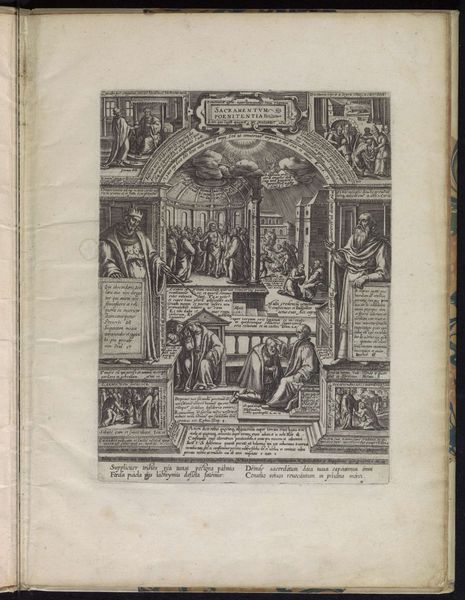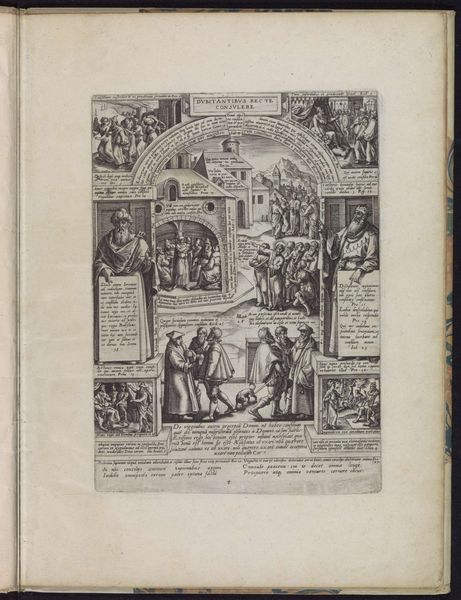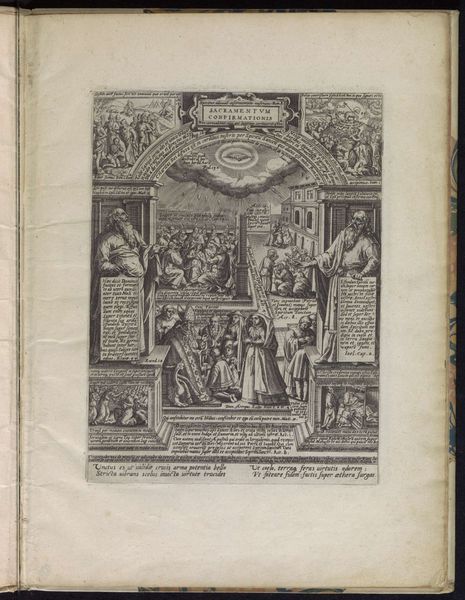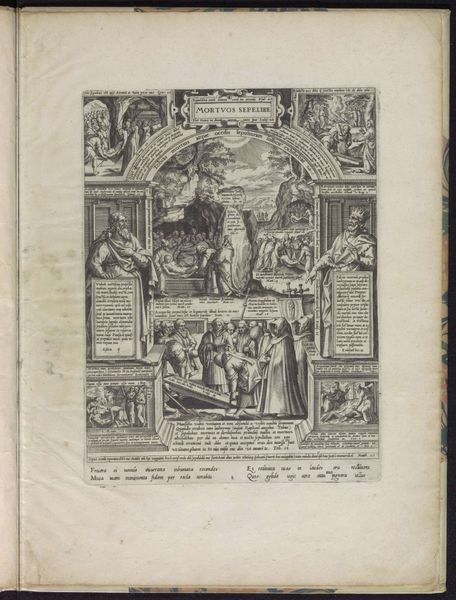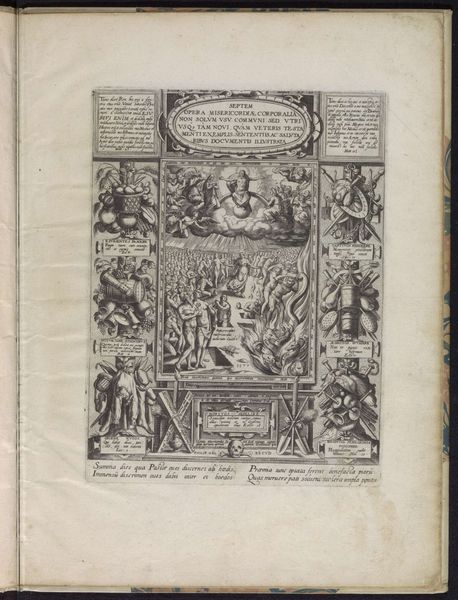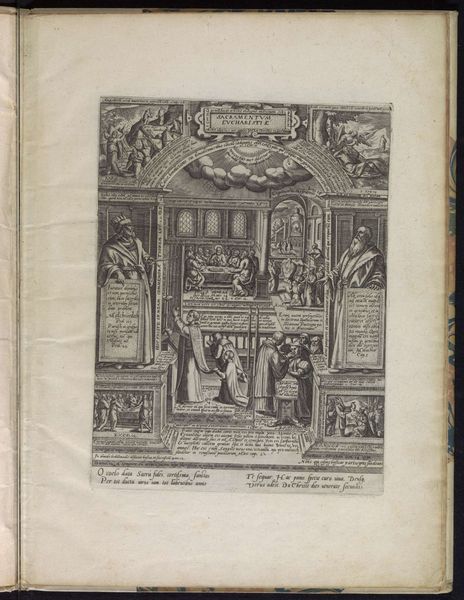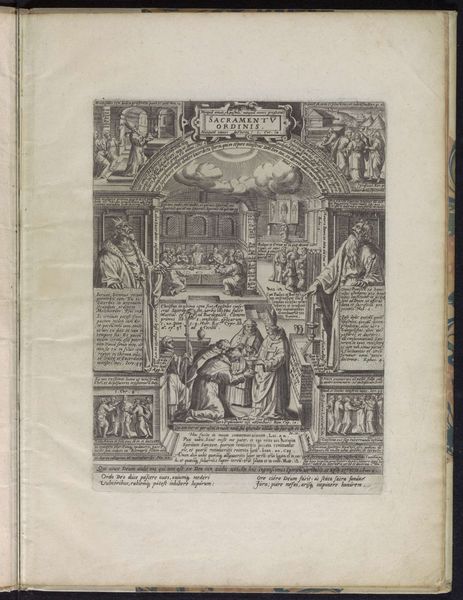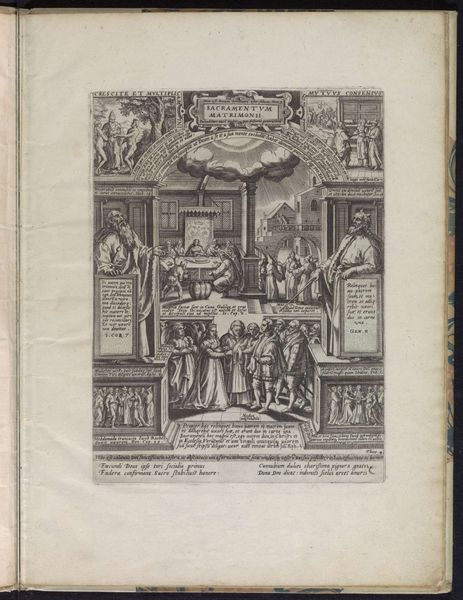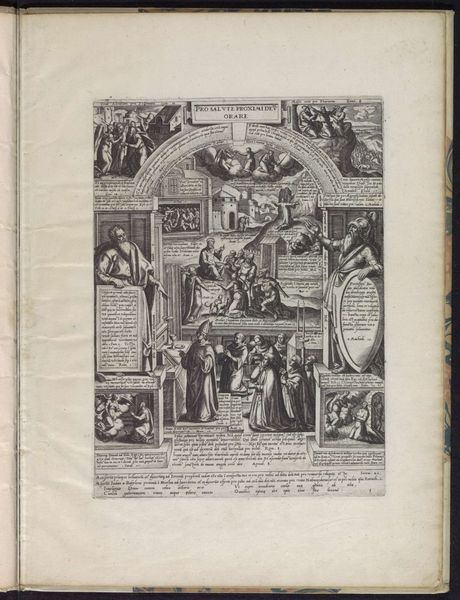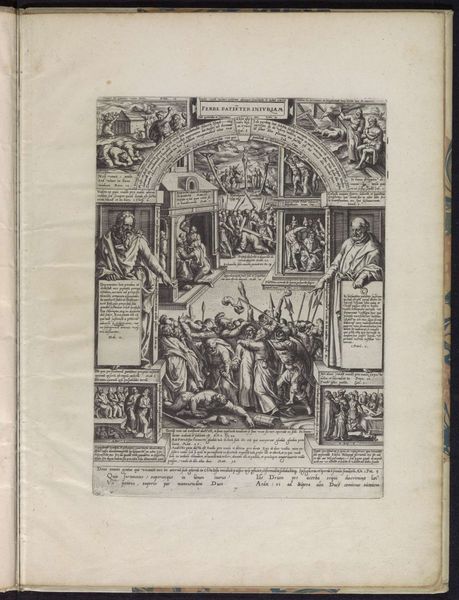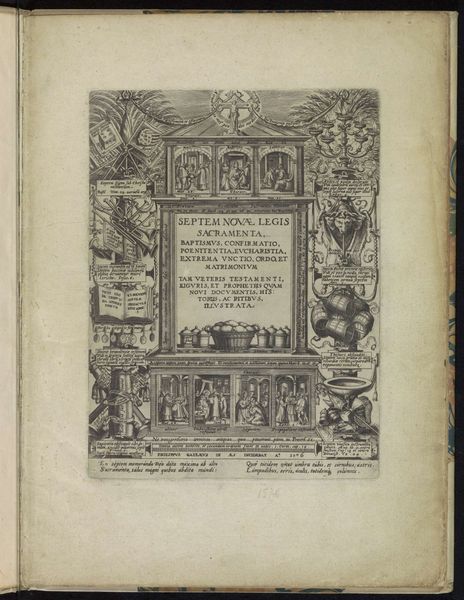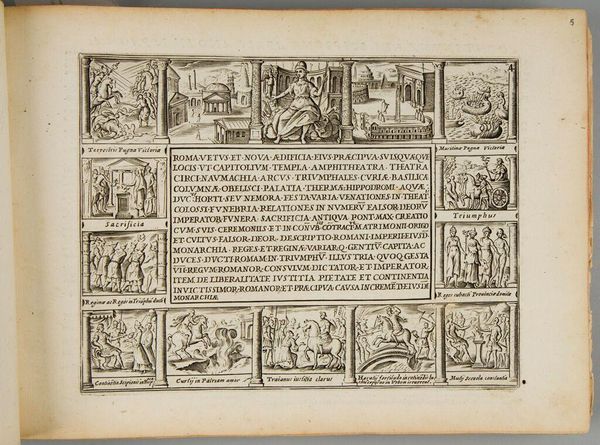
print, paper, engraving
#
narrative-art
#
ink painting
# print
#
figuration
#
paper
#
11_renaissance
#
history-painting
#
northern-renaissance
#
engraving
Dimensions: height 257 mm, width 192 mm, height 375 mm, width 275 mm
Copyright: Rijks Museum: Open Domain
Philips Galle made this engraving, "Spijzigen van de hongerigen," sometime between his birth in 1537 and death in 1612. The lines were etched into a copper plate, a skilled and laborious process allowing for the image to be reproduced many times on paper. The dense network of lines creates a sense of depth and texture. Galle skillfully uses hatching to create shading and volume, bringing the scenes to life. The act of engraving, with its repetitive and precise movements, mirrors the themes of labor and charity depicted in the artwork. Engraving was a key technology in early modern Europe. It facilitated the spread of information and ideas, enabling the mass production of images for books and prints. Galle's print reflects the social context of his time, where charitable acts were seen as essential duties, with this artwork serving as both a devotional object and a tool for social commentary. It is through understanding this combination of materials, making, and context that the artwork's full meaning comes into view.
Comments
No comments
Be the first to comment and join the conversation on the ultimate creative platform.

